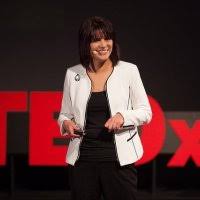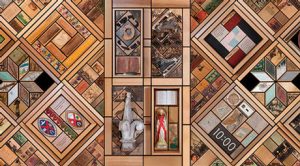A student guest post in response to Cecelia Reekie’s Leadership Lecture on October 11, 2017. This post has been adapted from an assignment in English 310.
 Photo Credit: Cecelia Reekie, Linkedin
Photo Credit: Cecelia Reekie, Linkedin
By Ginger Ebbett
I am truly horrified by our tragic history of Aboriginal relations in Canada, and especially so now that I have witnessed the hurt, division, and confusion the residential schools caused. The residential school system resulted in extensive loss of culture, the separation of thousands of families, as well as mental, physical, and sexual abuse. The suffering these schools caused is overwhelming. Sadly, there are children who did not survive attending these establishments.
On October 11th, 2017, Cecelia Reekie spoke specifically of her father’s experiences in the Alberni Residential School, referring to the process as “cultural genocide.” As part of the Leadership Lecture Series, paired with The Witness Blanket Exhibition, Reekie spoke of her personal efforts to bring about awareness of Aboriginal culture. Her presentation created a feeling of reconciliation and healing from the sad history of the residential schools in Canada.
I learned so much from Reekie’s talk. Firstly, it is of great importance that we discuss the racism involved in the building of residential schools. Reekie mentioned a recent member of the Senate’s Standing Committee on Aboriginal Peoples, Lynn Beyak, who believed “Indigenous people should trade in their status cards and become Canadian citizens.” This illustrates that sadly prejudiced still exists today and emphasizes the ongoing problem of racism: I for one will not practice such blatant disregard for equality.
Reekie also spoke of oral tradition, and the limitations of the written language as a communicative tool within the culture. Witnesses were once sent from each tribe to attend large meetings to record events and then orally report back to their tribe. The oral tradition truly illustrated the power of words. In short, Reekie argued that words are meant to
. . . change lives. Words can change feelings. Words can heal.
This inspiring statement was followed with the “healing song,” in which the drums were played, and the audience was asked to approach Reekie with words of encouragement or healing. This was an amazing experience for me as an audience member, as it made way for intimacy and reconciliation between the audience and Reekie. It made way for words of encouragement, and allowed us to express our sorrows together. The drummers sang lyrics such as “fly eagle, fly” to encourage growth, and I was honored to be a part of that ceremony.
It was an incredible experience to connect with the speaker, touching her shoulders and having the ability to express our wishes to move into a better future.
Wrapping individuals in blankets was another strong symbol in the presentation, as well as within The Witness Blanket exhibition. The blanket has been a long-lasting symbol of protection within many cultures, which was essentially the inspiration of master carver and Kwagiulth artist Carey Newman (Ha-yalth-kingeme) while creating The Witness Blanket. The intention was to take items which witnessed the events within the residential school walls, and transform the pain to a sense of reconciliation by creating a blanket of protection.
This was an incredible piece of art to see, as it truly captured the confusion, pain, and separation that resulted from the residential schools. Yet the piece also embodied a spiritual transition from hurt to that of healing and reconciliation. When I walked into the room to view The Witness Blanket, I could feel the weight of this history in the air. Each piece has witnessed potentially horrible things, and to be able to have a glimpse into those experiences through these items was humbling. It was explained that wrapping the head in a band of cloth is to protect one’s mind, paired with a blanket wrapped around the front of the chest and back to protect one’s heart.
Gifted with this knowledge, I felt a deeper sense of healing, as it communicated a true intention of restoration and reconciliation.


Comments are closed.